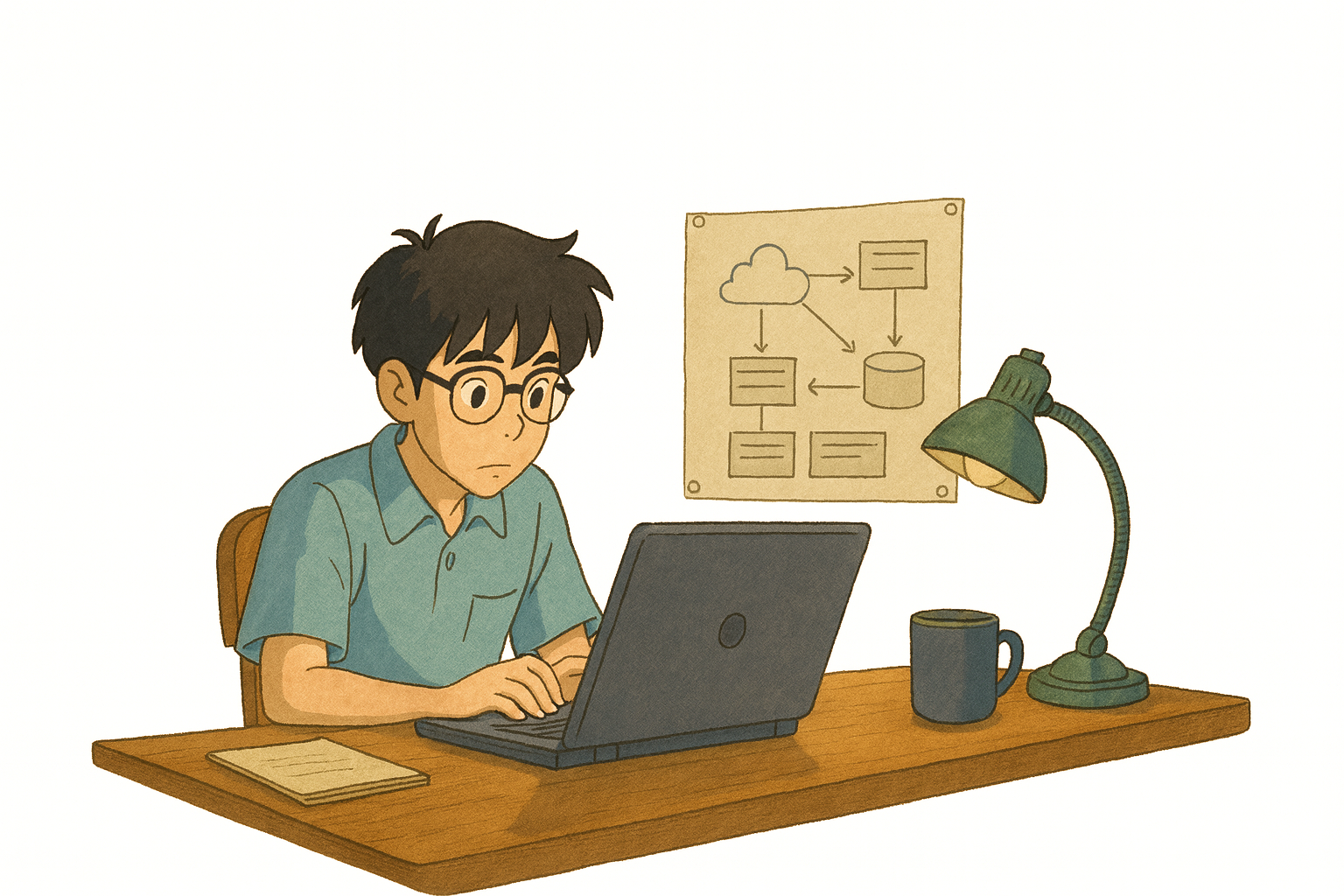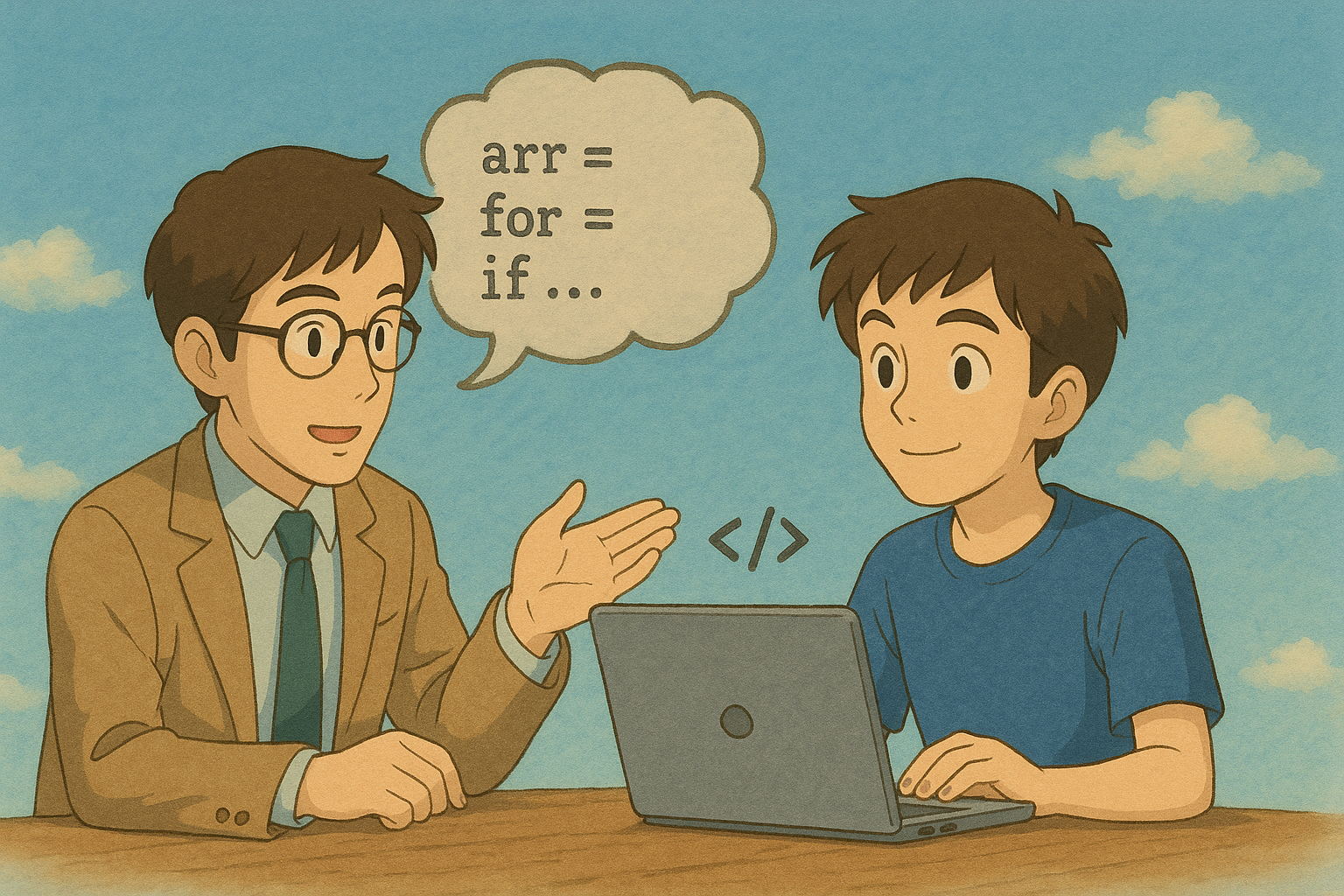All blogs · Written by Mayank
System Design Interviews 101: The 5 Fundamentals Every Candidate Must Know

TL;DR
System design interviews reward clarity—not clever tricks. Master the five fundamentals below and walk into every round with quiet confidence.
Why This Guide Exists
You just survived a 45-minute whiteboard marathon. The interviewer nods politely, thanks you for your time, and the Zoom window goes dark. Seconds later the doubts start:
Did I go deep enough on data modelling? Should I have mentioned eventual consistency? Was Redis the right cache?
Unlike coding rounds—binary pass/fail—system design interviews feel ambiguous and subjective. Based on my experience on the other side of the table, conducting 100s of system design interviews, this playbook would give you a firm ground with awareness of objectively evaluating your performance.
Prefer learning by doing? Spin up the interactive scenario, Crack the System Design Interview, and practice these concepts with instant AI feedback.
The Five Fundamentals
- The Meet-and-Greet Sets the Tone
- Clarify Before You Architect
- Trade-Offs Trump Tools
- Zoom From Satellite View to Street View
- Design for the Inevitable Fire
We’ll unpack each principle, share real interview snippets, and close with a practice plan you can start tonight.
1. The Meet-and-Greet Sets the Tone
Principle — Your 60-second intro is your first design signal.
Many candidates treat introductions as harmless small talk. Big mistake. Interviewers are already grading you. A crisp intro communicates scale, ownership, and enthusiasm.
Example of a strong six-liner:
“Hi, I’m Sarah—ex-Stripe, now building distributed payment rails at a fintech startup. My last project processed 50 K TPS across three regions. I obsess over latency budgets and cost curves, so I’m excited to think through scaling trade-offs with you today.”
Why it works:
- Relevant context → shows system-level experience
- Concrete numbers → proves impact
- Personal intrigue → signals passion
- Collaborative framing → sets a positive tone
Action item: Draft your own six-liner that covers background, a quantifiable win, what energises you, and a friendly nod to collaboration.
Tip: Delivering this should come casually in the first few minutes in a human way. Also, based on the interviewer’s training and taste, they may help to make the candidate comfortable with some small talk like weather, sports, etc. It is not a good idea to answer such questions in a framed way.
2. Clarify Before You Architect
Principle — Great questions show maturity, not confusion.
Jumping straight into solutions without scoping the problem is the #1 rookie error. Elite candidates pause to uncover constraints.
Ask questions around three axes:
- Scale & Workload — “Peak QPS? Read/write ratio?”
- Business Context — “Optimise for cost or UX? Growth projections?”
- System Constraints — “Latency SLAs? Compliance needs? Legacy tie-ins?”
Avoid shallow tech questions like “Can I use Kafka?”—they reveal premature optimisation.
Sweet spot: Two to four sharp, multi-dimensional questions that frame the rest of the discussion.
3. Trade-Offs Trump Tools
Principle — Senior engineers explain why, not just what.
Technology choices are easy; articulating trade-offs is where the bar is set. Contrast options and expose risks.
Instead of: “We’ll use Redis for caching.”
Try: “Redis gives us sub-millisecond reads but introduces invalidation complexity. We’ll add a fallback path to the primary DB to protect against cache outages.”
Common trade-off arenas:
| Decision | Pros | Cons |
|---|---|---|
| SQL vs NoSQL | ACID, joins | Harder horizontal scale |
| Horizontal scale | Eventual consistency | |
| Sync vs Async | Simple reasoning | Higher latency |
| High throughput | Complexity in retries | |
| Caching | Faster reads | Staleness, extra infra |
Great candidates also show an evolution plan: “Start monolithic; shard user data once we exceed 100 K users.”
4. Zoom From Satellite View to Street View
Principle — Think like an architect, speak like a PM.
Start high-level, then selectively zoom in. A layered narrative proves you can prioritise and communicate at multiple altitudes.
- Overview — components & data flow.
- Deep Dive — pick one latency-critical area.
- Hold the Rest — “We can cover the API after this…”
- Reconnect — tie details back to the big picture
This pattern displays systems thinking, stakeholder empathy, and time management.
5. Design for the Inevitable Fire
Principle — Production systems break; smart designs plan for it. In practice, this is achieved by asking the following questions for every component you put on the whiteboard & then answering them:
- Single point of failure?
- Detection strategy?
- Graceful degradation path?
Example — File Upload Service
- Bottleneck ⇒ storage I/O
- Detect ⇒ queue depth, 95th percentile latency
- Degrade ⇒ redirect to backup region, batch uploads off-peak
Bringing It All Together
Prompt: “Design Instagram Stories.”
Watch how a top candidate weaves the fundamentals:
- Clarify — Asks about TTL, audience size, and UX vs cost.
- Satellite View — Draws four main components: upload, storage, feed generation, delivery.
- Street View — Deep dives into storage, choosing object storage for 24-hour TTL.
- Trade-Offs — Explains cost vs CDN latency, storage choices.
- Fire Drill — Plans autoscaling and queue-based back-pressure.
Notice the rhythm: scope → architecture → zoom in → trade-offs → failure modes.
The Meta-Skill: Interview as Design Partner
Treat the interviewer like a future teammate, not a gatekeeper. When you showcase structured thinking, clear trade-offs, and proactive risk management, you’re implicitly signalling, “I’ll make your life easier once I’m hired.”
Hiring teams aren’t just looking for architects—they’re looking for collaborators.
Ready to Practice Live?
System design mastery is a muscle. Work it with deliberate reps. Our AI-powered platform gives you real-time coaching on exactly these fundamentals. Go through these Tough Tongue AI role play scenarios for the most common system design interview questions.
- Crack the System Design Interview: Covers the concepts of this blog in a personalized AI coaching session.
- System Design Interview Collection: A collection of 16 system design interviews autonomously conducted by Tough Tongue AI interviewer.



